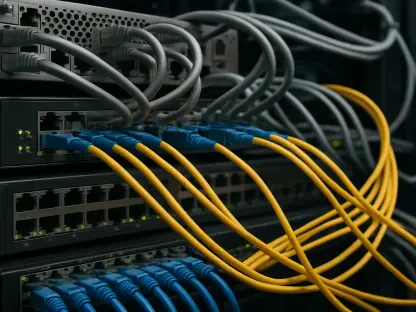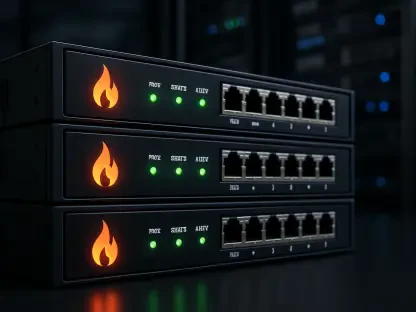As the global tech industry braces itself for the potential implications of President Donald Trump’s proposed tariffs on computer chips manufactured in Taiwan by TSMC, there is a growing concern among industry experts. Trump’s administration aims to bolster U.S. manufacturing by relocating the production of essential goods such as semiconductors back to American soil. Even though TSMC is in the process of constructing a factory in Arizona, it is essential to note that this new facility will not employ the company’s most advanced manufacturing technologies, which are set to remain in Taiwan.
Potential Impact on the Tech Industry
Effects on Global Supply Chains
The tech industry heavily relies on sophisticated global supply chains to maintain efficiency and innovation. The disruption resulting from implementing tariffs could be drastic, especially given that TSMC is the world’s largest chip manufacturer. Companies such as AMD, Nvidia, Qualcomm, Apple, Broadcom, and Marvell depend on TSMC’s chips for their products, making these companies vulnerable to cost increases. If the tariffs are enforced, these increased manufacturing costs are likely to be passed down to consumers, affecting major corporations like AWS, Microsoft, Google, Dell, HPE, HP, Cisco, Apple, and Lenovo. This could ultimately result in higher prices for everyday users, having a ripple effect across various sectors.
Jim McGregor of Tirias Research emphasizes that disrupting any segment of the tech industry’s value chain will have significant repercussions. Restricting chip imports could lead to shortages and higher production costs, impacting innovation and operational efficiencies. This disruption can cascade down to other markets and contribute to broader economic turbulence both in the U.S. and globally. Patrick Moorhead from Moor Insights & Strategies echoes these concerns, predicting that TSMC’s clients may strongly resist the tariffs, leading to complex negotiations but possibly preventing the tariffs’ enactment.
Responses from Industry Experts
Bob O’Donnell of TECHnalysis shares similar skepticism regarding the implementation of these tariffs, pointing out their considerable negative repercussions. O’Donnell predicts that rather than seeing immediate tariffs, the U.S. government might offer incentives to boost domestic chip production. Such a long-term strategy aims to gradually raise national production capabilities over several years, balancing the short-term disruptions with long-term benefits. This anticipated transition includes various stages of negotiation and collaboration, potentially steering clear of immediate trade barriers that could exacerbate existing supply chain vulnerabilities.
O’Donnell further suggests that establishing domestic manufacturing facilities would require substantial investment and time to reach the scale and sophistication needed by tech giants. This transformation process could span several years, resulting in a temporary period of uncertainty for companies depending on TSMC’s advanced chips. Ultimately, while the overarching goal of reinforcing national manufacturing aligns with strengthening economic security, its execution might entail significant hurdles and nuanced strategic planning.
Broader Implications for Economic Security
Challenges in Achieving Production Goals
Although the prospective tariffs are intended to reinforce U.S. manufacturing and economic security, they could simultaneously trigger widespread cost increases and strain the global economy. The goal is to mitigate risks related to a potential Taiwan invasion by China, which could impede the supply of advanced chips. Experts argue that developing a robust domestic semiconductor industry necessitates extensive capital input, state-of-the-art facilities, and skilled workforce development—all assets currently centered in Taiwan. Therefore, fostering these capabilities within the U.S. implies long-term commitments and strategic foresight.
Jim McGregor’s insights highlight that establishing a resilient semiconductor ecosystem involves a holistic approach, integrating not just manufacturing but also research, development, and innovation centers. He indicates that narrowly focusing on one aspect of the supply chain, such as imposing tariffs, may create imbalances that could slow progress and create bottlenecks. Given these complexities, Trump’s administration might need to consider comprehensive policies combining incentives, subsidies, educational programs, and public-private partnerships to achieve their manufacturing goals safely and sustainably.
Strategic Long-Term Solutions
As the global tech industry braces for the potential fallout from President Donald Trump’s proposed tariffs on computer chips made in Taiwan by TSMC, there is a rising concern among industry experts. The Trump administration’s goal is to boost U.S. manufacturing by bringing the production of vital goods, like semiconductors, back to American soil. TSMC is already working on building a factory in Arizona, which is a step toward this goal. However, it’s important to highlight that this new Arizona facility will not use TSMC’s most advanced manufacturing technologies, which the company plans to keep in Taiwan. This situation raises several questions about the future of U.S. semiconductor production capabilities and the possible impacts on the global tech supply chain. The industry is closely watching how these tariffs will affect not only production costs but also the competitive edge and innovation within the sector.









